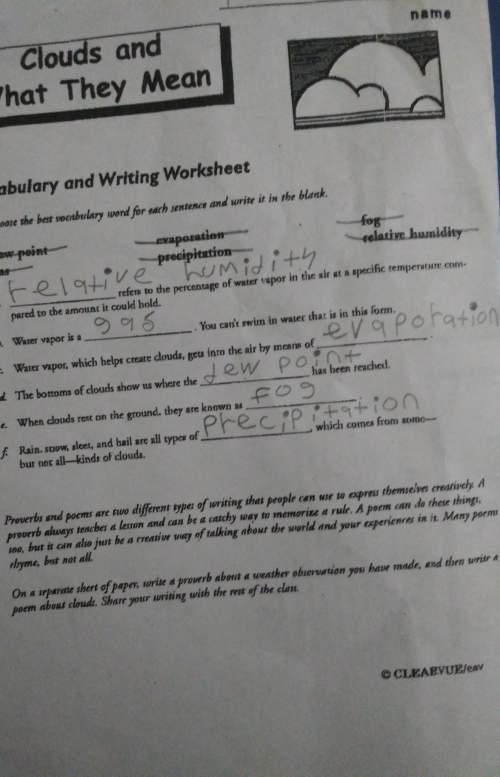
Physics, 14.06.2021 15:40 briseno138
Electromagnetic waves propagate much differently in conductors than they do in dielectrics or in vacuum. If the resistivity of the conductor is sufficiently low (that is, if it is a sufficiently good conductor), the oscillating electric field of the wave gives rise to an oscillating conduction current that is much larger than the displacement current. In this case, the wave equation for an electric field E(x, t) = E,(x, t)J propagating in the +x-direction within a conductor is where µ is the permeability of the conductor and p is its resistivity.
Required:
a. A solution to this wave equation is where kc = vwµ/2p. Verify this by substituting E, (x, t) into the above wave equation.
b. The exponential term shows that the electric field decreases in amplitude as it propagates. Explain why this happens.
c. Show that the electric field amplitude decreases by a factor of 1/e in a distance 1/kc = v2plwµ, and calculate this distance for a radio wave with frequency f = 1.0 MHz in copper (resistivity 1.72 x 10-8 ? · m; permeability µ = µ0).

Answers: 3
Another question on Physics

Physics, 22.06.2019 04:10
Calculate the work done by an external agent during an isothermal compression of 1.00 mol of oxygen from a volume of 22.4 l at 10∘c and 1.0 atm pressure to 16.8l
Answers: 2

Physics, 22.06.2019 10:30
In automobile steering wheel is shown what is the ideal mechanical advantage blank? if the ama is eight what is the efficiency of the steering wheel?
Answers: 1

Physics, 22.06.2019 11:00
If a simple machine reduces the strength of a force, what must be increased?
Answers: 3

Physics, 22.06.2019 12:30
Hydrogen atoms are excited by a laser to the =4n=4 state and then allowed to emit. what is the maximum number of distinct emission spectral lines (lines of different wavelengths) that can be observed from this system? 8 6 2 7 4 5 1 3 calculate the wavelength of the 4⟶14⟶1 transition. =λ=
Answers: 2
You know the right answer?
Electromagnetic waves propagate much differently in conductors than they do in dielectrics or in vac...
Questions






Spanish, 28.05.2020 01:07











Mathematics, 28.05.2020 01:07






